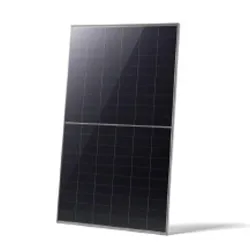standard solar panel size
Understanding Standard Solar Panel Sizes A Guide for Homeowners
The adoption of solar energy has surged in recent years, making it an appealing option for homeowners looking to reduce their carbon footprint and cut energy costs. However, when considering a solar panel installation, one crucial aspect that often comes into play is the size of the solar panels. Understanding standard solar panel sizes is vital for making informed decisions about your renewable energy system.
What Are Standard Solar Panel Sizes?
Solar panels come in various sizes, with the most common type being monocrystalline and polycrystalline panels. The standard size for residential solar panels is typically around 65 inches by 39 inches, or approximately 1.7 square meters. However, the dimensions can vary slightly depending on the manufacturer and technology. The popular wattage ratings for these panels are between 250 to 400 watts per panel, with high-efficiency models boasting even higher wattage.
The Importance of Panel Size
Understanding the size of solar panels is important for several reasons
1. Space Requirements One of the primary factors in designing a solar array is the available roof space or land area. Knowing the dimensions of solar panels can help homeowners evaluate how many panels they can install based on their specific installation site.
2. System Output The size of the solar panel directly influences its energy production. Larger panels can generate more electricity, which is a critical factor for homeowners aiming to meet their energy needs. By understanding the wattage capacity in relation to the panel size, one can better estimate the potential energy production of a solar system.
3. Aesthetic Considerations For many homeowners, the appearance of solar panels is just as important as their performance. Different sizes can affect the overall look of a roofing system. It’s essential to consider how the size of the panels will blend with your home, especially if aesthetics are a concern.
Factors Affecting Solar Panel Size Decisions
standard solar panel size

Several factors can influence the choice of solar panel size for homeowners
1. Energy Needs Understanding your household's energy consumption is crucial. A typical home might require a solar system size of 5kW to 10kW, depending on usage. By calculating how much energy you use monthly, you can determine how many and what size panels will best meet your needs.
2. Roof Structure The architecture of your house plays a significant role. Complex roofs with multiple angles, obstructions like chimneys, or limited surface area may restrict the number and size of panels that can be installed.
3. Local Regulations and Incentives Some regions have specific regulations or zoning laws regarding solar installations. Additionally, government incentives can sometimes dictate the size and type of panels that are most financially feasible for homeowners.
Understanding Power Output and Efficiency
The relationship between solar panel size and power output can also be influenced by efficiency ratings. Higher efficiency panels, typically found in smaller sizes, can produce more energy than lower efficiency panels of larger size. Hence, selecting the right size also involves analyzing your options based on efficiency ratings, which can range from around 15% to over 22% for the most advanced panels available today.
Conclusion
Determining the right solar panel size for your home involves a combination of your energy needs, available space, aesthetic preference, and local regulations. It's essential to conduct thorough research and possibly consult with professionals when designing your solar energy system.
Investing in solar energy can significantly benefit both your finances and the environment, but understanding the standard sizes and their implications will help you make informed choices. By aligning your energy consumption needs with the appropriate panel size, you can create a customized solar energy solution that fits your household's requirements while also contributing positively to the sustainability of our planet. As the shift towards renewable energy continues, knowing how to navigate the specifics of solar panel sizes is a step toward a more sustainable future.
-
Unlocking Energy Freedom with the Off Grid Solar InverterNewsJun.06,2025
-
Unlock More Solar Power with a High-Efficiency Bifacial Solar PanelNewsJun.06,2025
-
Power Your Future with High-Efficiency Monocrystalline Solar PanelsNewsJun.06,2025
-
Next-Gen Solar Power Starts with Micro Solar InvertersNewsJun.06,2025
-
Harnessing Peak Efficiency with the On Grid Solar InverterNewsJun.06,2025
-
Discover Unmatched Efficiency with the Latest String Solar InverterNewsJun.06,2025







